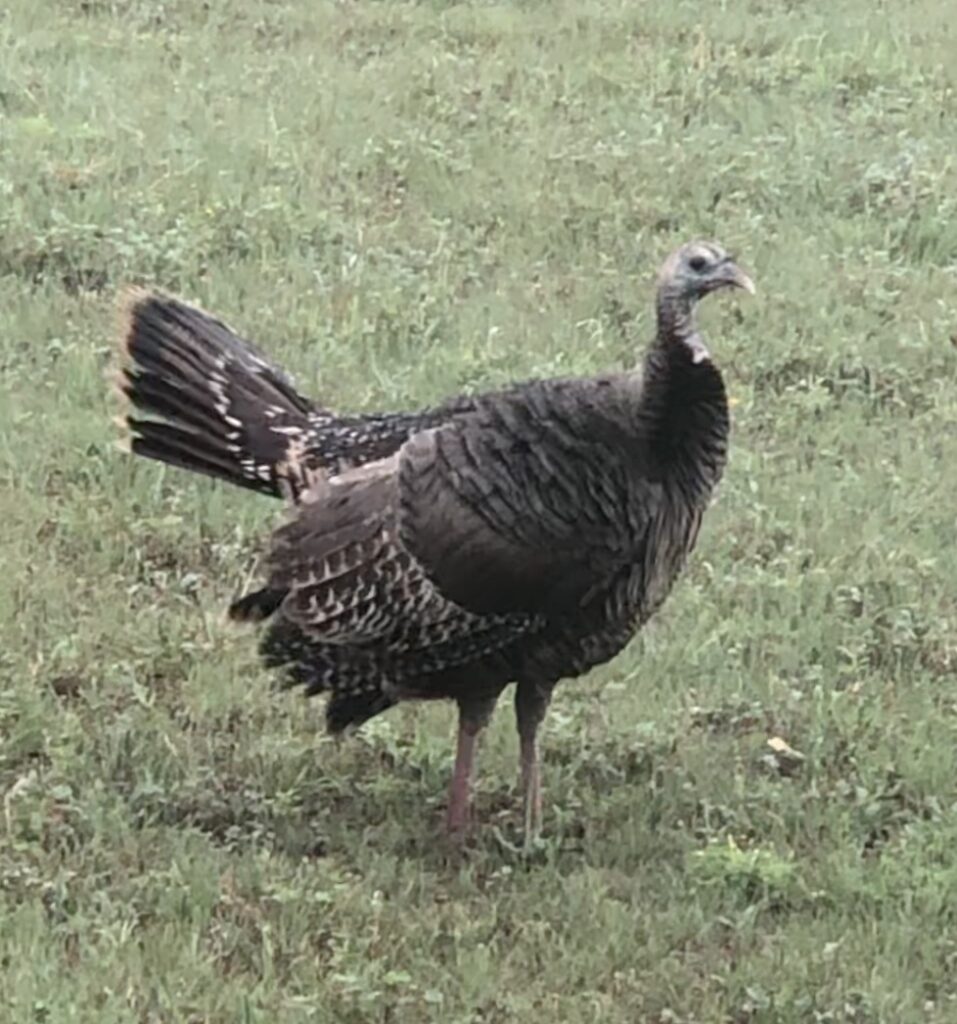We just love it when we are visited by wild turkeys here at Lucky Glider Rescue & Sanctuary. It was particularly rainy this week, and for some reason, this seems to bring the turkeys out in the open. Gail was able to capture this fine hen on camera while she lolled about preening in the yard. This one was walking slowly about the yard and made no vocalizations this time. But these beauties make all kinds of sounds. In addition to the tell-tale gobble sounds, they also cluck like chickens and make cackle-like chirps, yelps, and “kee-kee” sounds similar to guinea fowl. We’ve yet to see any toms courting the females, but this is the season for that. You will often hear them gobbling to attract the females.
Although wild turkeys have good eyesight, this one did not see that she was being watched. Their eyesight is poor at night; however, so they often seek shelter in trees and avoid being an easy target by dwelling on the ground at night. You may wonder how they get up in to trees considering their ungainly and awkward look. Well, wild turkeys, unlike domestic ones, have no problem lifting off the ground and sustaining flight. They are strong fliers despite their weight. I’ve seen them take off with the same grace and strength as a hawk or vulture. A typical flight is a quarter mile and they often stay close to the ground until it is time to lift up into the canopy of trees.
The habitat in Bosque county TX is ideal for turkeys. We’ve got wooded grasslands and plenty of trees for them to fly into for cover. Like chickens, wild turkeys are omnivores. That means they feed opportunistically on everything from small amphibians, reptiles, acorns, buds, leaves, seeds and insects. Sometimes they can be found poking around bird feeders and wondering into back yards looking for food. If you are fortunate enough to see these wild turkeys, hunker down and be patient and quiet as they stroll by. They will often hang about for as long as five minutes until moving on so long as you don’t scare them.

